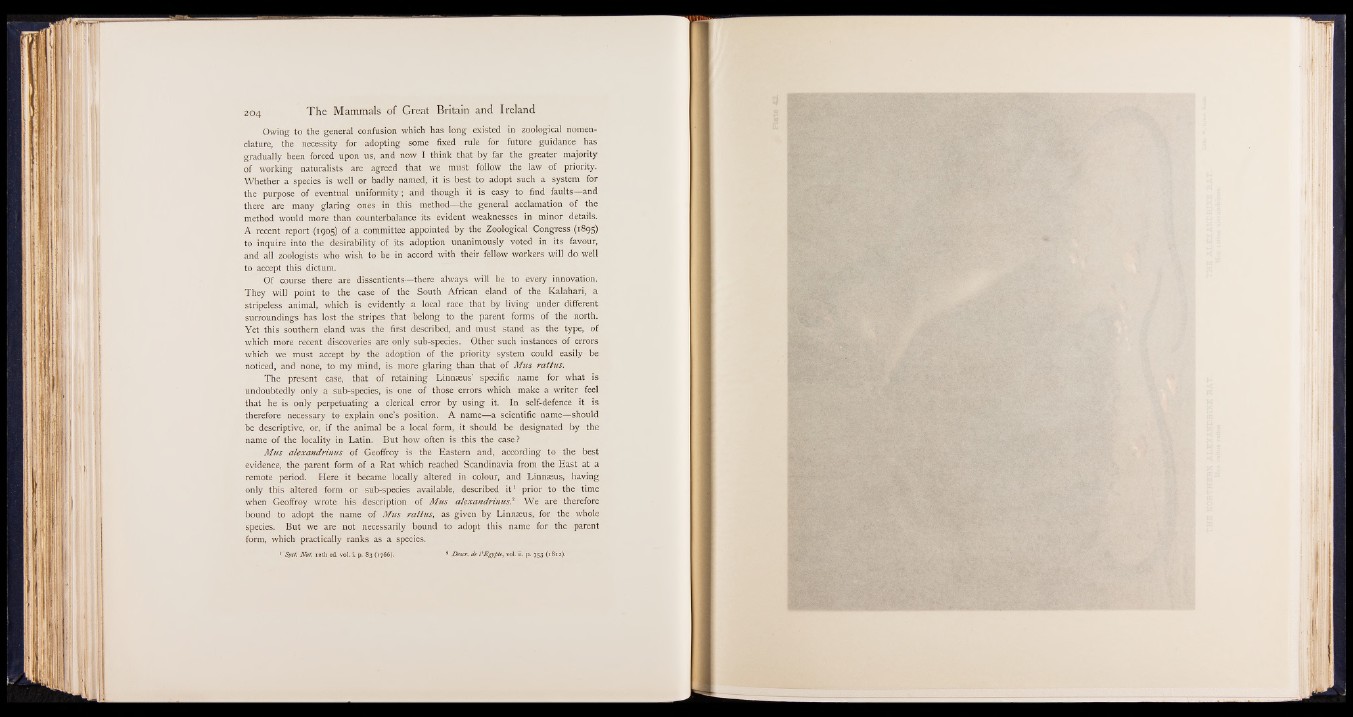
Owing to the general confusion which has long existed in zoological nomenclature,
the necessity for adopting some fixed rule for future guidance has
gradually been forced upon us, and now I think that by far the greater majority
of working naturalists are agreed that we must follow the law of priority.
Whether a species is well or badly named, it is best to adopt such a system for
the purpose of eventual uniformity; and though it is easy to find faults—and
there are many glaring ones in this method—the general acclamation of the
method would more than counterbalance its evident weaknesses in minor details.
A recent report (1905) of a committee appointed by the Zoological Congress (1895)
to inquire into the desirability of its adoption unanimously voted in its favour,
and all zoologists who wish to be in accord with their fellow workers will do well
to accept this dictum.
Of course there are dissentients—there always will be to every innovation.
They will point to the case of the South African eland of the Kalahari, a
stripeless animal, which is evidently a local race that by living under different
surroundings has lost the stripes that belong to the parent forms of the north.
Yet this southern eland was the first described, and must stand as the type, of
which more recent discoveries are only sub-species. Other such instances of errors
which we must accept by the adoption of the priority system could easily be
noticed, and none, to my mind, is more glaring than that of Mus rattus.
The present case, that of retaining Linnaeus’ specific name for what is
undoubtedly only a sub-species, is one of those errors which make a writer feel
that he is only perpetuating a clerical error by using it. In self-defence it is
therefore necessary to explain one’s position. A name—a scientific name—should
be descriptive, or, if the animal be a local form, it should be designated by the
name of the locality in Latin. But how often is this the case?
Mus alexandrinus of Geoffroy is the Eastern and, according to the best
evidence, the parent form of a Rat which reached Scandinavia from the East at a
remote period. Here it became locally altered in colour, and Linnaeus, having
only this altered form or sub-species available, described i t 1 prior to the time
when Geoffroy wrote his description of Mus alexandrinus? We are therefore
bound to adopt the name of Mus rattus, as given by Linnaeus, for the whole
species. But we are not necessarily bound to adopt this name for the parent
form, which practically ranks as a species.